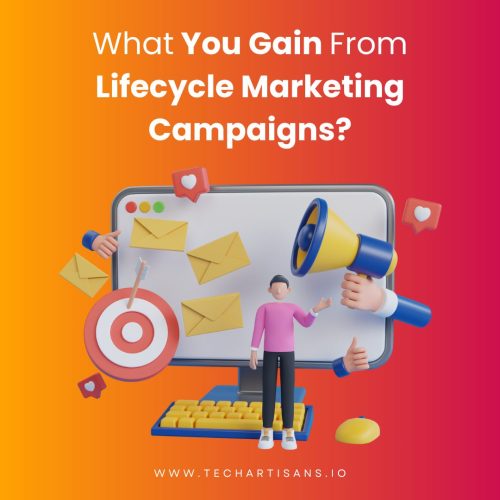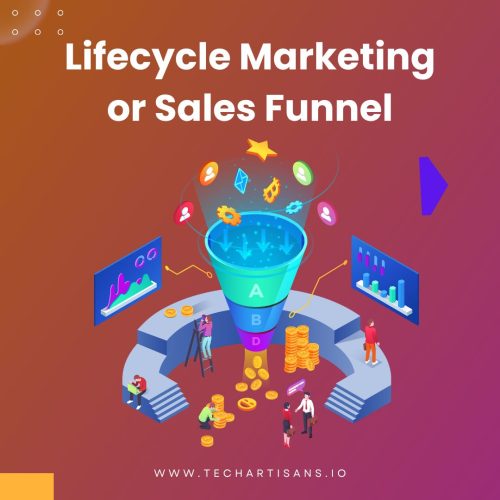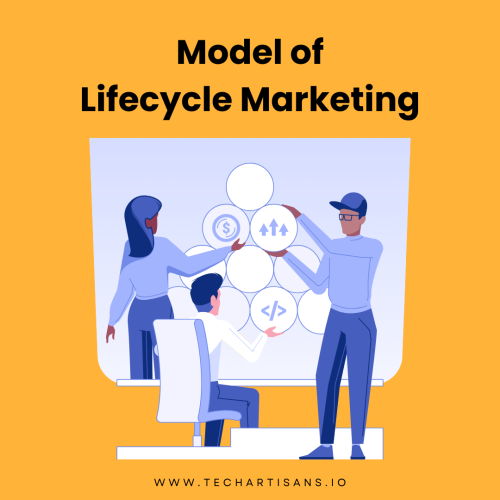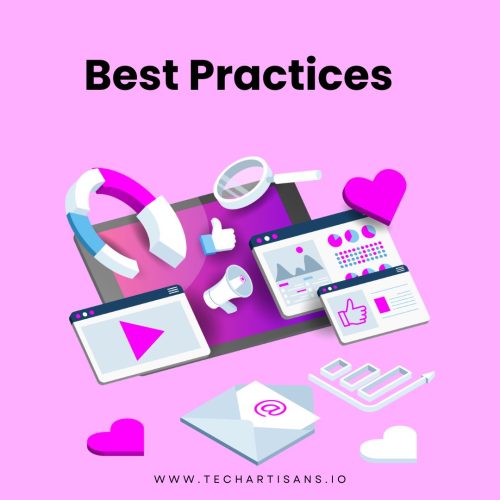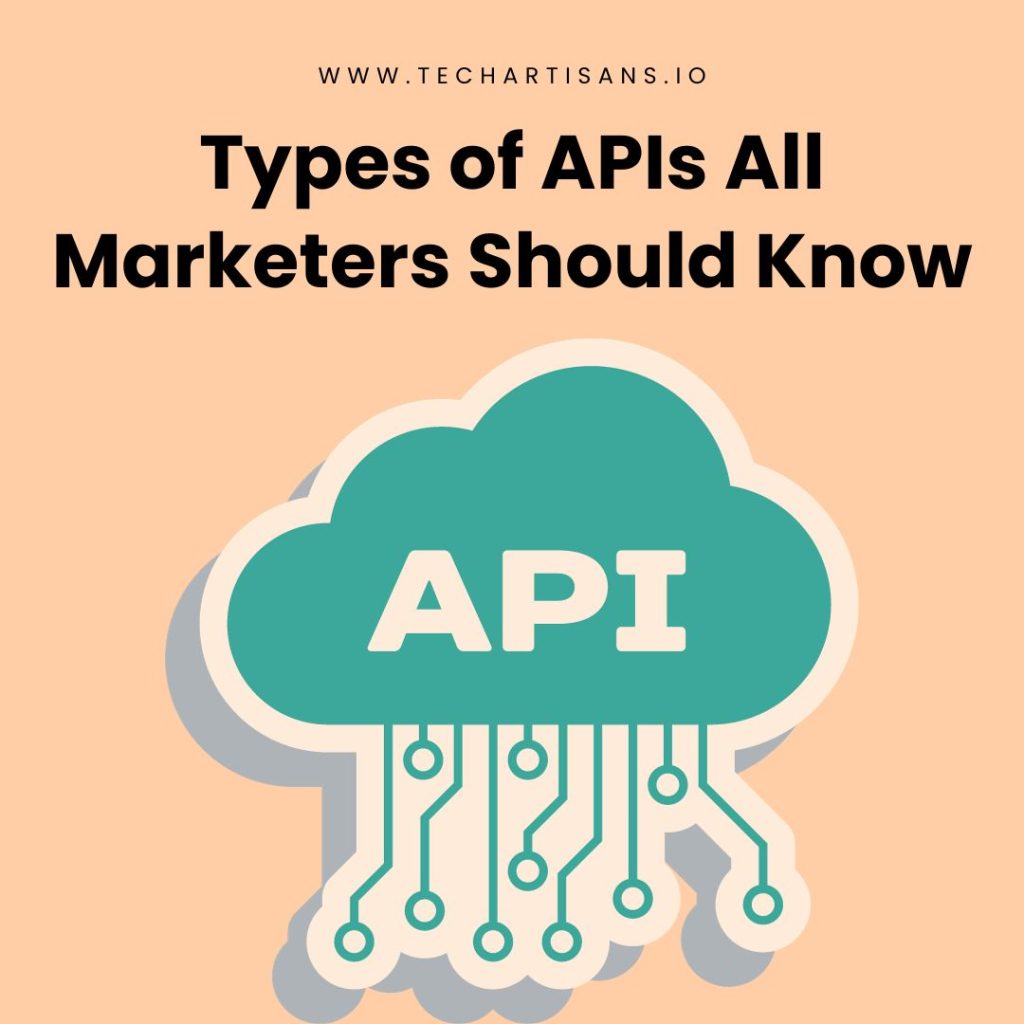Lifecycle marketing is a marketing strategy that brands use to satisfy their customers at any stage of their buyer journey. This approach is based on the idea that keeping your existing customers loyal is cheaper and easier than acquiring new prospects. The term “lifecycle marketing” is contrasted with the term “sales funnel” which is a more aggressive way of closing sales.
Whether you are trying to convert a prospect, a warm lead, or a returning customer, lifecycle marketing should guide you to achieve the highest level of customer engagement.
To make your lifecycle marketing effective, you need a genuine knowledge of your target audience and a little patience while they decide whether to buy from you or not.
Read Digital Marketing Kickstart: Finding Your Starting Point
What You Gain From Lifecycle Marketing Campaigns?
You Build Long-Lasting Relationships With Your Customers:
It gives your new customers space to willingly choose to buy from you. Learn more about Ways to Improve Customer Experience to further this goal. It gives your customers space to willingly choose to buy from you, without feeling pressured by aggressive marketing techniques. This respectful approach creates an image of a brand that people can trust so they become your loyal customers.
Enhances Positive Brand Image
In lifecycle marketing, you use a more personal approach to connect to your customers which helps you gain the reputation of a brand that cares about providing their customers with value.
Makes it Easy to Get Brand Advocates
Brand advocates are people who enjoy communicating with you and if they like your product, they spread the word about your brand. Facilitating people at every step of their buying journey makes them want to return to you.
Lifecycle Marketing or Sales Funnel
These are two different ways of doing business. In a similar vein to understanding the differences between Agile vs. Scrum, The main difference between lifecycle marketing and sales funnel is the two approaches the attitude towards people.
A sales funnel is a marketing technique aiming at selling as many goods as possible and as fast as possible. It revolves around making users feel they need something and then selling it to them.
On the other hand, lifecycle marketing is a more polite and respectful way of doing business. It aims at helping the target audience solve their problems. It builds mutually beneficial and respectful relationships with your audience. It is based on developing the buyer journey that you would like to experience yourself.
Practically, the lines between these two approaches blur since any marketing technique involves persuasion to win over your competitors. Both of these methods are equally effective. Which one you choose is an ethical question.
Model of Lifecycle Marketing
The basic customer lifecycle marketing model is a three-stage strategy: Attract Attention > Convert > Fulfill. It means that you have to attract user’s attention first, then show them how your product will benefit them, and then fulfill their need for that product.
You can add more steps to the customer lifecycle stages to create a more exclusive customer journey making it more robust and fundamental. It can become:
Target > Attract Attention > Gain Leads > Nurture > Convert > Retain > Develop Relationships
Target
Start with identifying your target audience and then addressing them directly with your offer. You can identify your target audience based on their interests, demographics, behavior, location, context, etc. You can target individuals based on a specific topic which matches your niche and connect with those who are interested in your product or service.
Attract Attention
Attract attention of your targetted audience and invite them to your platform which can be your website or a landing page where you offer them something of their interest with great content like infographics, ebooks, webinars, research reports, blog and social media posts
Gain Leads
You capture the lead by using a web form that includes your offers; premium content, free consultations, etc. Or you can just encourage your visitors to sign up to your email list from where you can send them more offers.
Nurture
Nurture your leads with your unique strategy to make your product or service the obvious choice when they are ready to buy. You will need a consistent campaign of useful information with personalized follow-up marketing messages to nurture your lead. Provide them with content to meet their expectations regularly.
This allows you to slip in the sales element in a non-pushy way like “check out our designs of footer that will suit your website.” You can use any channels for this purpose where your leads are; emails, social media, SMS or mix of all of them in your multichannel marketing strategy.
Some warm leads will convert at the nurture phase but you will need some more work for others because they are still not ready to buy.
Convert
Observe their past actions to craft an offer and create a buying process map and then present them with an offer that is too good to resist. The buying process should be as smooth, intuitive, and straightforward as possible
Keep your offers non-aggressive while letting them know what your other customers think about your product or service since social proof plays an important part in decision making.
Then proceed to closing the sale. Closing is more than the transaction; you need clear communication and written documentation to make the process smooth.
If you are closing the deal via email, mention all the necessary details about transfer and taxes to avoid any unpleasant surprises.
You can create chatbots for social media platforms to answer users’ queries, receive orders and promote your products.
Retain
The best way to retain customers is by fulfilling your commitments and that too on time. A sale is only a beginning point of relationship with your customers when you are following a customer lifecycle marketing approach. Your customers trusted your brand when they made a purchase, you will have to support them by answering their questions, following through when it is required and help them out when they have any issues.
Develop Relationships
Once an individual becomes your customer, engage them through various platforms, especially through a well-designed website. Learn about the Benefits of Having a Website in this context you can develop your relationships in various ways, for example, by providing them with additional value that surprises and delights customers. You can give them a bonus card, a referral link to engage more people, a membership status, etc.
Keep on developing strategies, products, and services to generate additional sales and recurring revenue. Also, you can encourage referrals by incentivizing your customers and partners.
Best Practices in Customer Lifecycle Marketing Strategy
Add Your Clients to Your CRM System
To build more valuable relationships with your customers, it’s crucial to explore various Ways to Grow Your Brand Through Digital Marketing, which aligns with the principles of lifecycle marketing and long-lasting relationships with your customers using a lifecycle marketing approach, you need to know them well; know their wants, needs, preferences.
A peek into the target audience’s buying history will give you some important info about them. This will allow you to make a highly targeted offer which will increase your revenue multifold.
To work this, you can use a CRM system that allows you to automate sales, monitor the process, communicate with customers, and collect data about them in one place. A good CRM system will streamline your sales and make the whole process a lot smoother and easier.
Adopt Marketing Automation
There are many stages in customer lifecycle marketing where you can automate the process. For example, you can create email workflows to cover processes like upselling, purchasing, onboarding, etc. There are several handy tools like chatbot which helps your customer support to focus on more complicated queries without answering day to day FAQs.
Identify Churn Risks
Figure out where your customers stop using or paying for your service. Identify the weak points in the customer journey. It can be something as little as; emails load for too long, or it is not apparent where to register, or the shipping cost turns out to be too high for distant countries. Once you’ve found out the problem points, fix them right away. This will also help you identify if you are being too pushy while practising customer lifecycle marketing.
Personalize Communication
One of the keys to retain your customers in lifecycle marketing or any other form of marketing, is to make them feel special. When they get a personalized experience, they feel valued and many of them will share their data for a more unique customer experience. You can personalize communication with your customers by means, as highlighted in our article on Connecting with Customers Through Your Website sending them personalized emails and segmenting your audience during the conversation in a chatbot for particular issues which brings us to the next point.
Use Segmentation
Segment your clients in lifecycle marketing based on milestones like the first purchase, abandoned shopping cart, the third purchase, six months together, etc, to strengthen your relationships.


